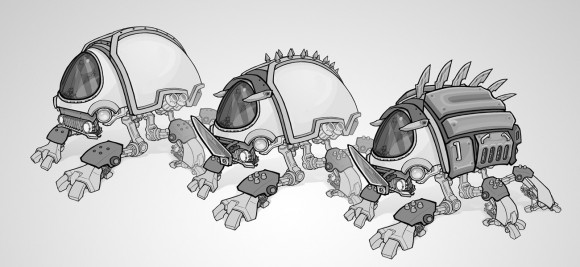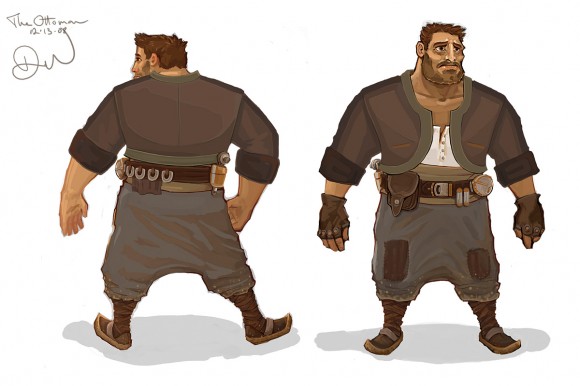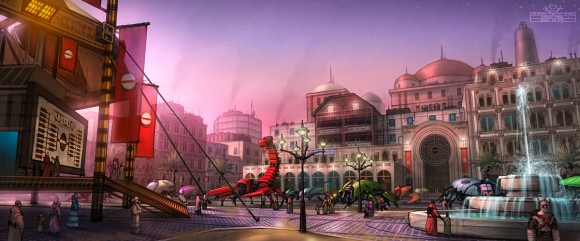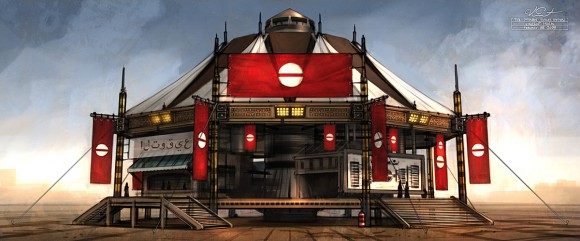The Scorpion Rider’s tattoo would only be onscreen for a few seconds, making it difficult to justify lavishing a lot of time on its design. But somehow its fleeting appearance only made me more determined to get it right.
The tattoo is key to the character’s introduction, appearing even before his face does. But getting it right—really doing it justice—was well beyond my abilities. I wanted more than just a cool, menacing tattoo of a scorpion. Anyone can make one of those. For this project, what I really wanted to create was an Arabic calligram, an ancient form of Islamic calligraphy in which a word or phrase is fashioned into the shape of an animal. Modern practitioners of the genre include the French-Iraqi Hassan Massoudy and Chinese Haji Noor Deen.
But of course, I can’t speak a word of Arabic, nor do I know any thing about calligraphy. The best we were going to be able to do was fake it, using existing calligrams to craft a tattoo that looked kinda like an Arabic word shaped like a scorpion.
And that’s when Dhar Jabouri stepped in. Some of you may have spotted his comments in some of the earlier entries on this blog. Dhar and I have known each other for years, from back when we were frequent posters on the Hash Animation:Master forums. When I asked Dhar if he was familiar with Hassan Massoudy’s work, this is what he responded:
Yeah, I’m familiar with Masoudy’s work. BTW, I’m from Iraq as well :o) I think maybe you’d like this Muslim Chinese calligrapher Haji Noor Deen Minguang Jiang. I know him very well, I translate for him when he tours the US. He only speaks Chinese and Arabic, so I translate for him from Arabic to English and we have developed quite a rapport. His mix of Chinese and Islamic ancient calligraphy makes for a distinctive and unique style. I am usually his pupil as well as interpreter whenever he visits northern California.
And that’s when I decided that this was going to be the greatest tattoo ever made.
Since that conversation, I, Dhar, and designer David Ward have been collaborating on a true Islamic-style calligram—an authentic, dramatic tattoo that lives up to the character of the Scorpion Rider and the world of The Ottoman. Opportunities like this don’t come along very often, and believe me, we’re making the most of it.





